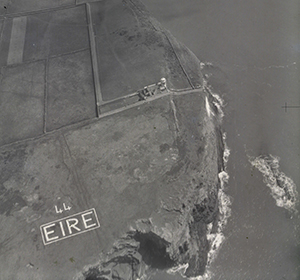BITE-SIZED HISTORY
Published in Issue 4 (July/August 2021), Volume 29BY TONY CANAVAN
Irish father of the Suez Canal
It is a little-known fact that Francis Rawdon Chesney, born in Annalong, Co. Down, in 1789, formulated the original plan for the Suez Canal. Chesney was an officer in the Royal Artillery, rising to the rank of general. In 1829 he was sent on a mission to Egypt to explore the possibilities of Egyptian and Syrian routes to India. He visited Damascus, Tiberius and Djerash before reaching El Werdi on the Euphrates, down which he sailed on a raft. He concluded in his report that a Suez Canal was a preferable route, but the British government declined to proceed with the idea. Years later, the French engineer Ferdinand de Lesseps undertook the project, and at the official opening in 1869 he referred to Chesney as ‘the father of the Suez Canal’.
The idea for the Suez Canal was the least of Chesney’s achievements. He mapped an overland route to India by the Euphrates river valley. He embarked on a second exploration in 1835, landing in Syria and travelling across the desert with two small steamboats. Despite one of them sinking, Chesney charted the Euphrates, the Tigris and the Karum rivers before going on to India. He also published books, including accounts of his exploration of the rivers Tigris and Euphrates and a history of the Russo-Turkish conflict. He retired in 1847 but visited the Middle East twice more before coming to live in County Down until his death in 1872.
£6.3m project for Historic Armagh
Armagh, the oldest city in Ireland and its ecclesiastical capital, is famed for its Georgian architecture. Although not all of it has been well preserved, fifteen buildings, including former residential cottages on Barrack Street, dating back to 1830, will be restored under a new £6.3m project. When completed, the former cottages will house four shops with traditional fronts, restored windows, repointed Armagh stonework, and preserved staircases and fireplaces. A feature of some of the cottages is waste-disposal hatches that were linked to privies at the back of the homes, a late nineteenth-century feature that is now rarely seen. The five-year Townscape Heritage project is jointly funded by the British National Lottery Heritage Fund, Armagh City, Banbridge and Craigavon Borough Council and the property-owners, and will redevelop buildings in Armagh’s Upper English Street, Scotch Street, Barrack Street and Russell Street.
Eire uncovered

Above: The ‘Eire’ sign (No. 44) at Kilcreadaun Point, Co. Clare, one of 83 constructed around the Irish coast in 1943. (Military Archives)
In 1943, 83 ‘Eire’ signs, measuring 12m by 6m, laid out in stone and painted with limewash, were assembled on headlands along the coast to indicate Irish neutrality during the Second World War. The deployment of United States forces to Europe led to the creation of the signs so that the US Air Force could avoid Irish airspace. At first just the word ‘Eire’ (without the ‘fada’) was on the signs, but the Americans asked that they be numbered to help them navigate. Number 6, for example, was Howth and No. 80 was Malin Head. Fewer than 30 remain intact, with a handful in a restored or visible condition. In the hot summer of 2018 a furze fire on Bray Head revealed its ‘Eire’ sign, and the following year Dalkey’s ‘Eire’ sign was restored. Work has begun to restore the sign at Howth Head, and once the restoration is completed it will be visible to passengers flying into Dublin Airport.
No papist here!
May 2021 saw the centenary not only of the partition of Ireland but also of the appointment of Lord FitzAlan, an undistinguished English politician, as lord lieutenant of Ireland, the first Catholic to hold this post since 1685. This was meant to be a gesture of reconciliation towards Irish Catholics at the height of the War of Independence but, even though the lord lieutenant represented the king and was the figurehead of British rule, his appointment was not acceptable to Ulster unionists. Elected representatives addressed Orange meetings across the North, denouncing the appointment of a ‘papist’. T.H. Burn MP told one meeting that the real struggle in Ireland was not between unionism and nationalism but ‘between Protestantism and Roman Catholicism’, a comment greeted with thunderous applause. Belfast councillor W.J. Twaddle proclaimed that the appointment of a Catholic was ‘contrary to the constitution of this country’. Ironically, Lord FitzAlan was not only the first Catholic to hold the post in modern times but also the last lord lieutenant of Ireland.
















